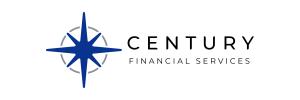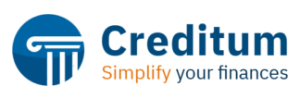Overdraft Loan in South Africa
Overdraft loans provide a safety net for unexpected expenses by allowing you to withdraw more money than you currently have in your account. This type of credit facility is often linked to your bank account, providing quick access when needed. It’s crucial to manage this option wisely, as the interest rates can be quite steep, potentially affecting your financial health. Consider it a convenient solution for short-term cash flow issues, but always plan a strategy to repay it promptly to avoid unnecessary fees. Remember, it’s best used as a last resort, not a regular habit. Proper understanding of its terms can prevent any undue financial burden.
| Company | Loan amount | Term of Loan | Apply | |
|---|---|---|---|---|
 | R 500 - R 4000 | 61 days | Apply for a loan | |
 | R 500 – R 4000 | 61 days | Apply for a loan | |
 | R 500 – R 350000 | up to 4 months | Apply for a loan | |
| The loans offered have minimum repayment terms of 61 days (2 months) and maximum repayment terms of 120 days (4 months). Lending rates vary from lender to lender in the range from 12% to a maximum APR of 36%. For example, for a loan of R10 000 that will be paid in 3 months, the total payment of the loan will be R15 000. | ||||
 | R 500 – R 350000 | up to 12 months | Apply for a loan | |
 | R 500 – R 350000 | up to 12 months | Apply for a loan | |
| Example: Loan of 4000 R for 3 months, commission 808.48 R, total amount 4808.48 R, annual percentage rate APR 74.9%. The maximum APR possible is 74.9%. | ||||
 | R 500 – R 8000 | up to 6 months | Apply for a loan | |
 | R 500 – R 15000 | up to 12 months | Apply for a loan | |
 | R 500 – R 350000 | up to 72 months | Apply for a loan | |
| Representative example: Estimated repayments of a loan of R30,000 over 36 months at a maximum interest rate of 27.5% apr would be R1,232.82 per month including fees. Repayment terms can range from 2 - 72 months. Creditum is an online loan comparison tool and not a lender. | ||||
Benefits of using overdraft loans
Overdraft loans can be a valuable financial tool when unexpected expenses arise. One of their main benefits is the immediate access to funds without the need for a new loan application each time. This provides a safety cushion, allowing individuals to cover essential costs when their bank account balance is low.
Having an overdraft loan ensures you always have quick access to money, reducing financial stress in urgent situations.
Another notable advantage is the flexibility it offers. You only pay interest on the amount you actually use, which can be more economical than other loan types. This makes managing cash flow easier and can help in maintaining a healthy financial track record. Overdrafts can be a lifeline, giving you peace of mind in times of need.
How overdraft loans work in South Africa
Overdraft loans in South Africa provide a financial cushion for unexpected expenses. The process begins when you apply at your bank. They assess your creditworthiness and set a limit on your overdraft facility. Here’s how you can acquire one:
- Check with your bank for available overdraft options and requirements.
- Submit an application either online or at a branch.
- The bank evaluates your financial situation, considering your credit score and income.
- If approved, the bank assigns a credit limit to your account.
Once set up, the overdraft loan becomes accessible whenever your account balance drops to zero, offering flexibility in managing short-term cash flow needs. However, be aware of the interest rates and fees associated which can vary between banks.
Comparing Overdraft Loans and Other Loan Types
Overdraft loans are unique. They let you access extra funds when your bank balance is low, without the need for a separate loan application. Different from traditional loans, where you receive a fixed sum upfront, an overdraft gives you flexibility. It’s quickly accessible and acts like a safety net for unexpected expenses. On the downside, interest rates can be high, and it’s easy to rely too much on this option.
| Feature | Overdraft Loan | Personal Loan | Credit Card |
|---|---|---|---|
| Accessibility | Automatic, up to a limit | Requires application | Use up to credit limit |
| Repayment | Flexible, based on usage | Fixed monthly payments | Monthly, with minimum payment |
| Interest | High, on used amount | Lower, fixed rate | Varies, can be high |
Overdraft loans provide flexibility, but managing them wisely is key. Unlike personal loans, which offer predictability with fixed terms, overdrafts can lead to higher costs if not controlled. Credit cards also offer a credit line, but may entice overspending due to revolving credit with variable interest rates.
Eligibility criteria for overdraft loans
An overdraft loan can be a helpful financial tool when managed wisely. However, before accessing such facilities, a few criteria need to be met. First, having a current bank account is essential. Banks usually offer overdraft loans to existing customers who have a steady account history. This helps banks gauge your financial habits and creditworthiness.
Additionally, your income plays a significant role. Banks often require proof of a stable income to ensure you can repay the overdraft. This means a regular salary or business revenue must flow into your account. Some institutions might also assess your credit score, as it reflects how well you’ve managed past financial obligations. Overdraft approvals often rely on this key criterion.
Potential risks of overdraft loans
Overdraft loans can be handy when cash flow is tight, but they come with certain caveats. First, the convenience comes at a cost. Interest rates are often higher than other loan types, leading to quickly mounting debt if not closely managed. Unexpected fees might pop up if the overdraft limit is exceeded, adding to financial stress.
“Accidentally exceeding your overdraft limit can lead to additional charges, impacting your financial health.”
Furthermore, constant reliance on overdrafts might reduce availability when you truly need it, creating a cycle of debt. This can harm one’s credit score, affecting future borrowing ability.
Controversial opinions on overdraft interest rates
The debate around overdraft interest rates in South Africa is heated. Some finance experts argue that these rates are unjustly high and exploit those who can least afford it. They claim that banks reap significant profits while customers struggle with rising debts. Challengers believe overdraft facilities are necessary safety nets that protect against financial emergencies, claiming that interest rates reflect the risk taken by lenders. This divide highlights the tension between protecting consumers and maintaining financial service viability.
Tips for managing overdraft loans responsibly
Managing an overdraft loan effectively can help you avoid unnecessary debt and maintain financial stability. The key is to keep track of your spending and stay within your limits. Regularly reviewing your bank statements helps to see where your money is going and where you might be overspending. It’s also wise to keep a buffer amount in your account to cover unexpected expenses.
- Set a budget: Plan your monthly expenses to ensure you know exactly how much you can afford to use from your overdraft.
- Stay within limits: Avoid exceeding your overdraft limit to prevent additional fees and higher interest rates.
- Repay quickly: Try to repay the overdraft as soon as possible to reduce interest costs.
- Monitor accounts: Regularly check your account balance to manage your overdraft better.
Remember, an overdraft loan should be a temporary solution, not a long-term financing option. Use it wisely to manage cash flow gaps, and work on building a solid financial habit to avoid falling into a debt cycle.
